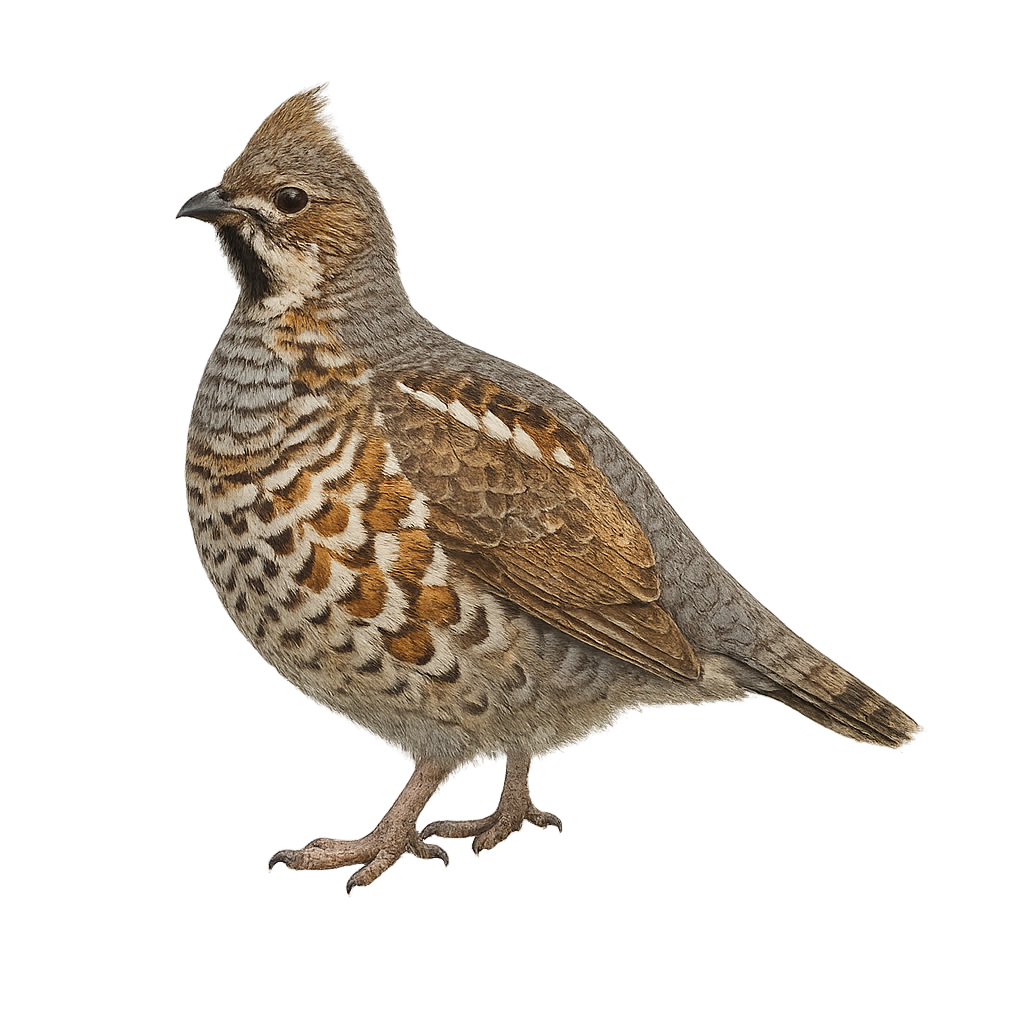Observe and photograph a species in its natural habitat
Learn where and when to observe a species in the wild, how to recognize it in the field, and what habitats it lives in. Get photography tips adapted to its behavior and capture stunning images without disturbing the animal. For full details, open the complete profile in the WildlifePhotographer app.
Wood grouse
Scientific name: Tetrastes bonasia

IUCN Status: Least Concern
Family: PHASIANIDAE
Group: Birds
Shyness: Suspicious
Safe distance: 30 m
Breeding season / Courtship: 01.04-30.04
Gestation: 25 à 28 jours
Births: 26.05-28.06
Habitat:
Forests and woodlands
Description:
The Hazel Grouse is a small, terrestrial bird belonging to the pheasant family, easily recognizable by its subtly colored plumage and robust build. It measures about 40 to 45 cm in length and weighs between 500 and 700 g. Its plumage is primarily brown and gray, with patterns of spots and bars that allow it to blend effectively into the dense vegetation of forests. The Hazel Grouse primarily inhabits dense deciduous and mixed forests, where it feeds on seeds, berries, young shoots, and insects. Although it is rather discreet and difficult to spot, it is often heard through its soft, deep call. The Hazel Grouse is a fairly sedentary bird, but it may migrate short distances depending on weather conditions. It is also an emblematic bird of wooded areas and forest landscapes. While it is not endangered, the Hazel Grouse may be threatened by the loss of its forest habitat and the degradation of its breeding sites.
Recommended lens:
>=300 mm
Photography tips:
Use a telephoto lens to photograph from a distance, respecting the shy nature of the species.
Photograph early morning or late afternoon, when soft light highlights the male’s crest and white-edged black bib.
Look for it in mixed forests with dense undergrowth, where it feeds on seeds, berries, and young shoots.
Be patient and quiet—hazel grouse flushes easily when disturbed.
IUCN status: Least Concern. Respect its fragile forest habitat, especially during breeding season.
Ready to take action?
Choose your platform and start your free trial today



